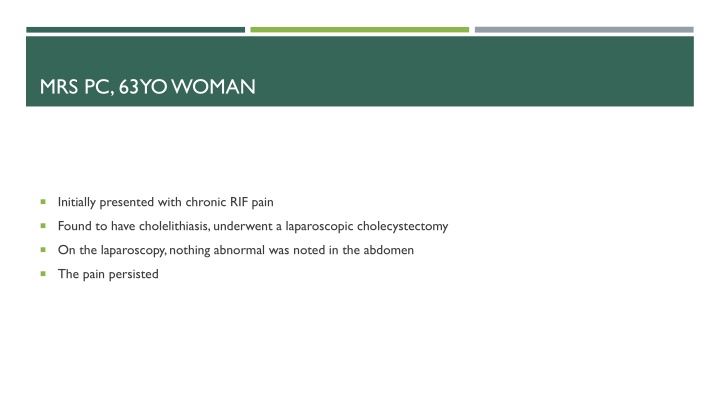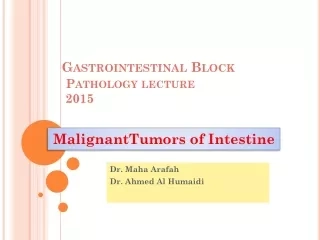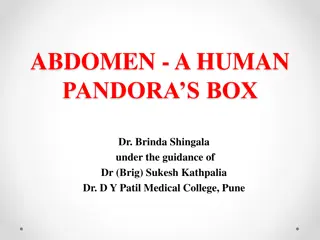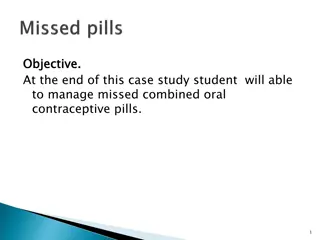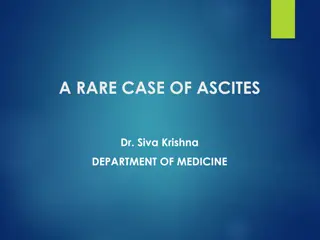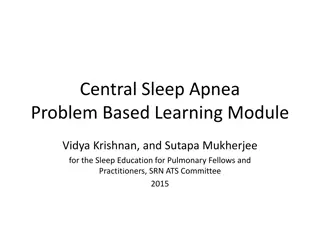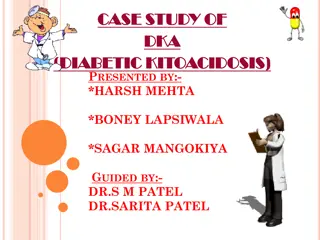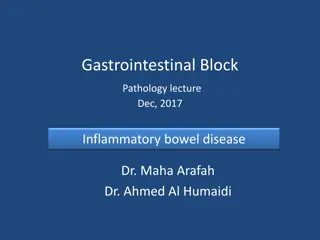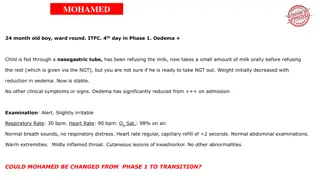Complex Case Study of a 63-Year-Old Woman with Adenocarcinoma
Mrs. PC, a 63-year-old woman, initially presented with chronic right lower abdominal pain due to cholelithiasis. Despite laparoscopic cholecystectomy, the pain persisted. Further investigations revealed adenocarcinoma of unknown primary, possibly of pancreatobiliary origin. Treatment included chemotherapy with complications and recurrence, leading to ongoing management challenges.
Download Presentation

Please find below an Image/Link to download the presentation.
The content on the website is provided AS IS for your information and personal use only. It may not be sold, licensed, or shared on other websites without obtaining consent from the author.If you encounter any issues during the download, it is possible that the publisher has removed the file from their server.
You are allowed to download the files provided on this website for personal or commercial use, subject to the condition that they are used lawfully. All files are the property of their respective owners.
The content on the website is provided AS IS for your information and personal use only. It may not be sold, licensed, or shared on other websites without obtaining consent from the author.
E N D
Presentation Transcript
MRS PC, 63YO WOMAN Initially presented with chronic RIF pain Found to have cholelithiasis, underwent a laparoscopic cholecystectomy On the laparoscopy, nothing abnormal was noted in the abdomen The pain persisted
MEDICAL HISTORY Panic attacks Varicose veins Cholelithiasis Distant ex-smoker (ages 18-27)
FAMILY HISTORY Mother: ovarian ca (age 70+) Maternal aunt: breast ca (age ~70) Father: lung ca (smoker)
HOPC (CONT.) Went on to have transvaginal ultrasound, which showed a cystic lesion on the R) ovary CT and PET scan showed: Large avid pelvic mass Avid serosal/peritoneal areas elsewhere Small volume ascites in the pelvis which was mildly avid Underwent laparotomy for radical debulking and biopsies
PATHOLOGY Histology showed multicystic mucinous cells on samples of: Serosal surface of the ovaries and fallopian tubes R) and L) parametria R) pelvic side wall Staining: Strong, diffuse CK7 and CDX2 positivity Patchy CK20 positivity ER negative Felt by pathologist to be of pancreatobiliary origin
DIAGNOSIS Adenocarcinoma of unknown primary Possibly pancreatobiliary source Distribution of disease not
TREATMENT Following surgery, was given chemotherapy FOLFOX + Avastin Had an adverse drug reaction to oxyplatin x2 Maintenance treatment Xeloda Achieved complete metabolic remission (on PET) for a period of 4-5 months
RECURRENCE 6 weeks ago, PET showed: Avid serosal/peritoneal deposits on sigmoid colon Avid peritoneal fluid in the pelvis Started on chemotherapy CBDCA + Paclitaxel + Avastin
TREATMENT COMPLICATIONS Acute: Oxyplatin hypersensitivity Fatigue Dry skin Mucosal ulcers Occasional nausea Permanent: Incisional hernia Peripheral neuropathy, stable Manifest as paraesthesia and neuropathic pain in feet and fingers Nil trouble with weakness, gait disturbance, unsteadiness, falls Some trouble with getting out medications as a result
CARCINOMA OF UNKNOWN PRIMARY (CUP) Heterogenous group of metastatic cancers where the primary site cannot be found Small primaries may remain undetected Primaries may have regressed Primaries may be incidentally removed in treatment for other conditions Accounts for 3% of cancer diagnoses As they are heterogenous, they vary widely in prognosis and response to specific treatments
CLASSIFYING CUP Clinical manifestations i.e. isolated axillary lymphadenopathy in women vs. peritoneal disease Pathological examination Cytology Immunohistochemistry Gene expression profiling
CYTOLOGY May differentiate tissue of origin but will not definitively determine primary site SCC is likely to have come from respiratory tract, but may come from skin Adenocarcinoma is particularly troublesome, as it may originate in many organs Very poorly differentiated cancers may not be identifiable
IMMUNOHISTOCHEMISTRY Involves stains for specific proteins which may help to predict the primary site CK7 and CK20 are commonly tested initially Results of initial stains inform selection of further stains The amount of tissue is often a limiting factor IHC staining algorithms have been shown to predict the primary site correctly in approximately two thirds of cancers with KNOWN primary in blinded studies
GENE EXPRESSION PROFILING Tests gene expression of malignant cells using techniques such as rt-PCR and microarrays Focuses on genes which help delineate organ of origin Assays may test for up to 92 genes to delineate between up to 42 tumour types GEP assays have been shown to predict the primary site correctly in approximately 85% of cancers with KNOWN primary in blinded studies (probably closer to 75% of CUP) In CUP studies, shows ~78% concordance with IHC predictions When IHC is more definitive (i.e. predicts single tumour type), GEP is more highly concordant than when IHC is ambiguous
